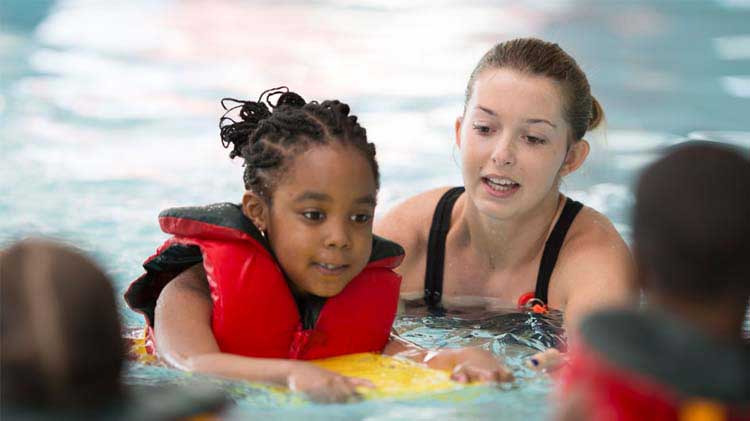The Red Cross Says Children with Autism are 160 Times More Likely to Drown
Swim schools are working to reduce the risk of children with autism drowning after alarming Red Cross statistic highlights the dangers and risks.
As summer reaches its peak, an increased focus on water safety is on everyone’s mind amid some alarming statistics. A recent study found that drowning is the leading cause of death for young children aged between one and four. And further data from the survey also highlighted that children with special needs were at an ever higher risk of drowning.
 The Autism Society of Florida released the data from a study that found that kids on the spectrum are up to 160 times more likely to drown than kids considered neurotypical.
The Autism Society of Florida released the data from a study that found that kids on the spectrum are up to 160 times more likely to drown than kids considered neurotypical.
Tyler Smallwood is a St. Louis swim instructor that has shaped his swim lessons to fit the unique needs of all students.
Smallwood, a swim instructor with St. Louis-based, British Swim School, spends hours in the water every day to ensure that all kids can swim and enjoy their time in the water safely.
“There’s a lot of trust that you have to build up. A lot of kids that come in are afraid of the water already. That doesn’t really change with kids who have special needs. If you know how to work through that with kids who are neurotypical, you can usually work through that with kids who have special abilities,” Smallwood said recently in an interview with Today in St. Louis reporters.
The Children’s Safety Network reports that children with autism spectrum disorder (ASD), Down syndrome, heart disease, and seizure disorders (like epilepsy) have a much greater risk of drowning.
In addition, the National Autism Association reported in a recent study that drownings had led to 91% of deaths for children on the autism spectrum 14 years old and younger.
In an attempt to prevent more deaths, British Swim School is working diligently to ensure that all children have the training and ability to swim safely and enjoy the water, not fear it.
Smallwood said during the interview, “Most of our kids who have special abilities are actually part of our regular curriculum.”
The swimming school’s new Dolphin program will cater specifically to kids with special needs to ensure that they get the attention they need to learn the basics of water safety.
Smallwood says, “We’re looking to find parents of kids with special needs who don’t feel comfortable joining those regular classes, and they feel their student needs extra attention. We’re
looking to recruit those students for that program so they can have one-on-one lessons– some, at a reduced cost.”
Communication is critical in his swimming lessons, Smallwood says, and for non-verbal students, he speaks to them through songs.
“It helps them feel familiar in that environment, and they know what is coming next if there’s a song attached to an activity. Lots of singing. Lots of swim aids, noodles, things like that. Sometimes I need to adjust my body positioning with a child to make them feel more safe and less vulnerable in the water.”
British Swim School teaches kids of all abilities to, at first, float and, later in the course, how to swim to safety.
The Red Cross Says Children with Autism are 160 Times More Likely to Drown – Conclusion
Hopefully, thanks to efforts by swimming schools and instructors like Tyler Smallwood, we will start to see a reduction in drowning deaths in children, especially those on the autism spectrum.
If you have any questions about autism products or would like to find more information about sensory products, please don’t hesitate to reach out and contact us directly. Our friendly and professional team is standing by to assist you.





